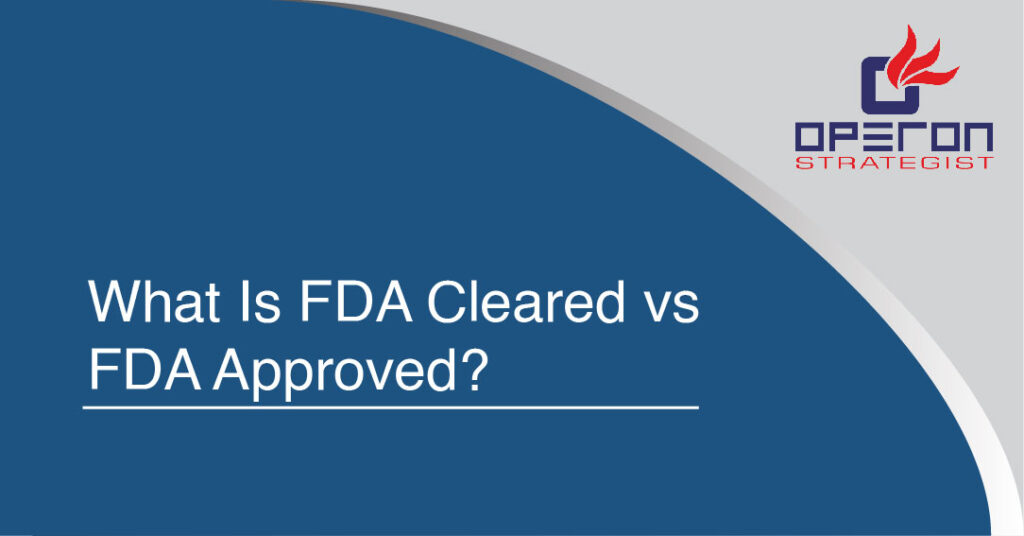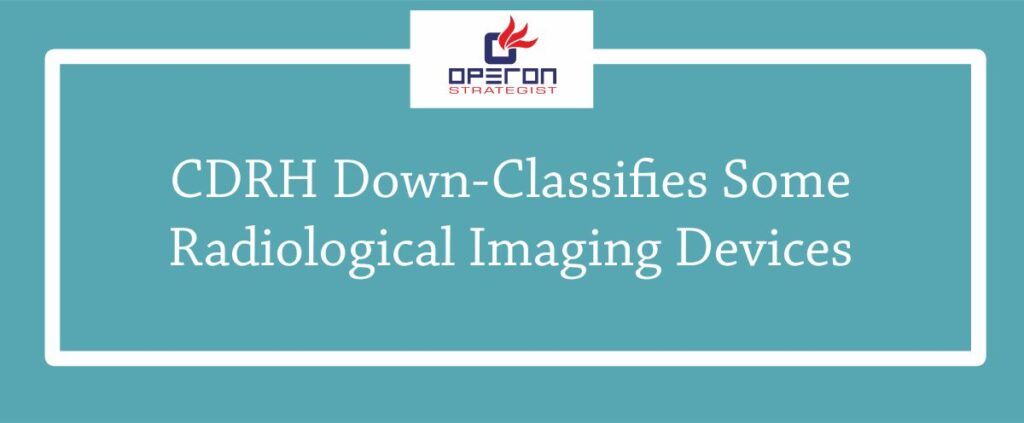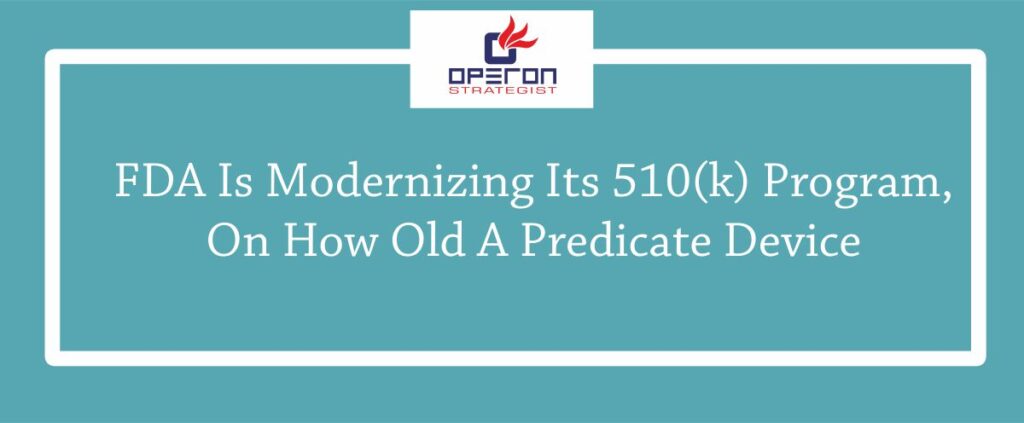If you are looking for FDA medical device approval process for your medical device then you are at the right place. Medical devices, from ideation to post-launch assessment, are directed in the United States by the U.S. Food and Drug Administration (FDA) under the Medical Device Regulation Act of 1976 an ensuing revision to the Federal Food, Drug and Cosmetics Act of 1938.
All organizations intending to move the medical device in the United States need to officially list their product with the US FDA. Most Class I devices can be self-enrolled but a great number of Class II devices require a 510(k) submission. And for Class III devices, a Pre-Market (PMA) submission is required. Very few people know the FDA medical device approval process and the difference between FDA cleared vs FDA approved devices. As a FDA 510 k Consultant we are spreading light on a few points which are helpful for device makers
Medical Device Regulations in the USA
In the USA, medical devices are managed by the Food and Drug Administration (FDA) with an expectation to guarantee the safety and effectiveness of the devices. The Center for Devices and Radiological Health (CDRH) is an FDA segment and observes after this program.
The FDA’s medical device regulatory pathways — for premarket audit, clearance, and approval are built on three classifications, which demonstrate the level of regulatory control important to guarantee a device’s safety and adequacy. Class I devices are examined as low-risk, generally safe, and many are excluded from the regulatory process.
Class II devices require remarkable controls for “labelling, guidance, tracking, plan, performance standards, and post-market observation,” and most require premarket notification 510(k) to appraise substantial equivalence (having the equivalent proposed use and technological attributes) to a lawfully marketed device.
Class III devices generally continue or support life, are embedded, or present a remarkable risk of illness or injury. The majority of class III devices need premarket approval (PMA), which investigates a variety of factors in weighing the potential health benefits from the intentional use of a device versus the possible risks.
As for that, the vast majority of Class I devices are exempted from 510(k) premarket notification submission, in the next phase, most of Class II devices are offered for premarket notification. And next it is about Class III devices which need to go through the Premarket Approval Application (PMA) and the other class III devices, which are exempted from PMA must submit a 510(k) notification to FDA.
Medical device manufacturers must cling to Current Good Manufacturing Practice (CGMP) regulations, which FDA examiner use to decide whether a manufacturer has the facilities, skills, and equipment to deliver and pack its product. Moreover, the FDA declared recently that every medical device must convey a unique device identifier (UDI), understandable by both machines and humans, to “improve patient safety, modernize device post-market surveillance, and encourage medical device advancement.”
FDA medical device approval process
Process 1
Decide the classification of your device by examining the FDA classification database using relevant search terms, or by distinguishing another device with the equivalent planned use and innovation. Grant special attention to the three-letter Product Code and seven-digit Regulation Number related to the predicate devices you recognize. In the event that the order can’t be resolved, use 513(g) to appeal classification from the FDA.
Process 2
Most Class I devices have to consent to the QSR (GMPs), aside from Part 820. For Class II and III devices, execute the Quality Management System (QMS) which meets the FDA Quality System Regulation (QSR) found in 21 CFR Part 820.
Innovative Class II, and all Class III, devices will probably require clinical investigations. Get “Pre-Submission (Pre-Sub)” input from the FDA.
Process 3
If the clinical examination is required, they should apply for an Investigational Device Exemption (IDE). Develop clinical trial agreement and conduct studies.
* Non-significant risk studies might be performed with IRB approval.
Process 4
For Class II devices, plan and submit 510(k) Premarket Notification application and pay the related charge. For Class III devices, get ready and submit Premarket Approval (PMA) application. Pay PMA submission expense.
Process 5
For Class III devices, FDA conducts facility investigations of every major supplier associated with the design and production of your device. All parties must be consistent with FDA QSR.
Process 6
For the Class II devices, the FDA issues 510(k) clearance letter and posts it online. And for Class III devices, the FDA issues PMA approval letter and posts it online.
Process 7
As of now, you should be in full consistency with QSRs. The FDA will not examine Class I or II device manufacturers for compliance prior to device registration but does conduct unplanned inspections and can issue a Form 483 for non-compliance.
Process 8
In the event that you have no local presence in the US, name an FDA US Agent representative as a local point of contact with the FDA.
Process 9
List your device and register your company utilizing FURLS framework on the FDA website as per 21 CFR Part 807. Pay charges for Establishment Registration and Listing which must be renewed every year.
Process 10
You are currently ready to move your gadget in the US. Your organization and device registration status will be recorded on the FDA website. Your approval does not lapse as long as no changes are made to the device design, intended use, and so on.
How long does it take for the FDA medical device approval process?
When you have presented a 510(k) application, the FDA has 90 days to survey it. This survey does not mean clearance. During the audit procedure, they likely will request additional information at which time the” clock” is stopped and after that continued upon the FDA’s receipt of the solution to their inquiries. If a product is cleared, the FDA will mail the entrant a letter with an assigned 510(k) number that says they” have discovered that the device is significantly comparable to legally marketed predicate devices – and consequently, the organization may begin to market the device subject to the general controls arrangements of the Food, Drug and Cosmetics Act.”
Basically, when the FDA sends you this letter, they are not” accepting” your device, they are stating that your device is significantly comparable to the predicate device(s) chosen in your 510(k), and which has just been cleared for sale by the FDA, and that you are now presently cleared to sell your device. You won’t receive a certificate from the FDA, yet this letter will be accessible on the FDA database as confirmation to your clients that your product is cleared for sale in the US.
Once you have done with FDA medical device approval process and you have received your FDA 510k clearance letter, the last step is to finish the FDA device listing and establishment registration using the online FURLS system on the FDA website.
Difference between FDA cleared vs FDA approved:
FDA cleared vs FDA approved is a significant capability between a drug and medical device. Given that undeniably more tech things are being checked by FDA, it\’s basic to fathom the qualification.
Generally, “FDA approved” applies to drugs, however “FDA cleared” applies to “devices” and instruments. As a condition of clearness, things like number crunchers and plans that are used to make clinical decisions are considered “devices” in this particular situation, so even a mimeographed sheet used to work up a differential assurance with some check boxes on it is a \”medical devices\” that ought to be cleared by the FDA cleared vs approved (the standard is whatever replaces or instructs a point of view with respect to the demonstration with respect to drug).
All manufacturers who try to showcase medical devices in the United States should initially pass an extremely exhaustive cycle with the FDA through one of two pathways—the section FDA 510(k) clearance measure, where a device is “cleared” for conveyance, or the Premarket Approval (PMA) measure, where a device is “approved” by the FDA.
Medical device organizations can utilize this pathway of FDA cleared vs FDA approved in the event that they can demonstrate considerable equality with a current item. The FDA analyst is assesses the data you give to \”clear\” your devices as like the predicate.
The PMA cycle, which ordinarily includes Class III devices, is considerably more thorough than the 510(k) measure. The devices need to demonstrate security and viability through clinical proof. This permits the FDA to put their stamp of \”endorsement\” on the devices.
It’s an obvious fact that Class II and Class III items are dependent upon different kinds of FDA investigations. FDA auditors can be probably the most conscientious individuals you will actually meet. They will look at your documentation intently, so you need to ensure you get the straightforward things, for example, phrasing, right.
What does FDA cleared vs FDA approved mean?
Clearance demands are for medical devices that are actually similar to those as of now available. Affirmed demands are for things that are totally new and should be investigated for security in the event of new perils. The two angles should be demonstrated or given by the submitter to guarantee legitimate methods are followed.
It implies that the office has established that the “advantages of the item exceed the known dangers for the planned use.” Manufacturers must present a premarket approval (PMA) application and the aftereffects of clinical testing so as to get approval.
When deciding to approve a product or drug, the FDA has to decide if the benefits outweigh the risks. The FDA is usually inclined to approve a product that has a higher risk if the potential benefit is significant — like an artificial heart valve that can save someone’s life.
FDA cleared or approved is usually mandatory to market or sell products in the US that might have a significant risk of injury or illness, but can also benefit your health — such as prescription medications, over-the-counter medications, vaccines and Class III medical devices.
The FDA categorizes medical devices into Class III, Class II and Class I. Complex medical devices that are implanted in your body, life-sustaining, or have the potential to cause significant injury or illness in the body are in Class III. Those include implanted pacemakers, replacement heart valves and even breast implants.
Lower-risk devices and products used outside of the body, like condoms, motorized wheelchairs and bandages, fall into Class II and Class I. For reference, Apple’s ECG app for the Apple Watch is in Class II.
This distinction is usually applied to medical devices. Medical devices are classified into 3 categories based on ease of use and risk in case of failure:
Class I: Low risk devices (e.g., bed pans, bandages, etc.)
Class II: Medium risk devices (e.g., pregnancy kits, glucose monitors, etc.)
Class III: High risk devices (e.g., pacemakers)
Accordingly, the stringency of regulations applied to get these devices to market varies from most relaxed to strictest. For a device to be FDA cleared or approved it only needs to show that it is comparable in performance to other similar devices already on the market. This is usually applied to Class II devices. However, for an “FDA approved” label, more extensive safety and effectiveness testing is performed before the device can be sold or marketed. For the approval process our team provide medical device regulatory consulting to the medical device manufacturer.
- adminhttps://operonstrategist.com/author/admin-2/
- adminhttps://operonstrategist.com/author/admin-2/
- adminhttps://operonstrategist.com/author/admin-2/
- adminhttps://operonstrategist.com/author/admin-2/




